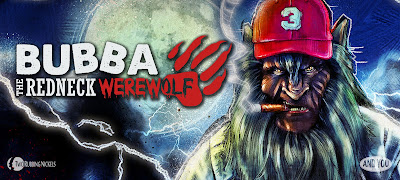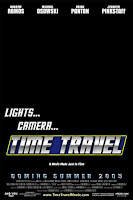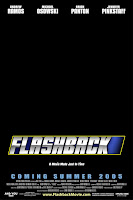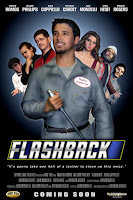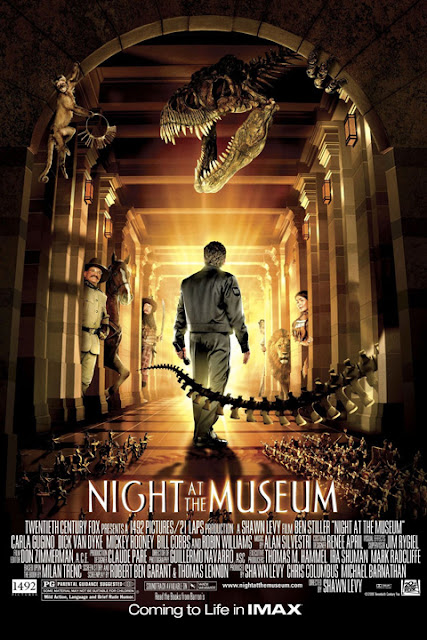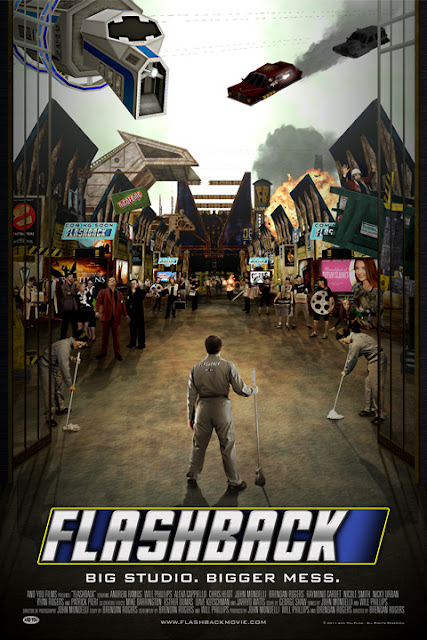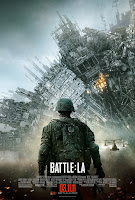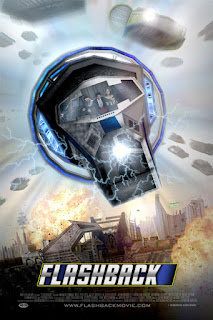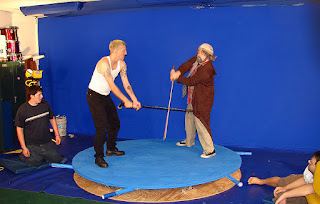Movie titles are fascinating – and sometimes the most
artistically fulfilling or narrative-appropriate title for your film isn’t the
right choice. It’s important to find the
sweet spot between what makes sense for your movie and what will make people actually
want to see it.
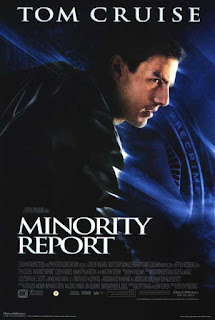 When trying to elaborate on this principle, I often go back
to the title “Minority Report.” Literarily, it’s a solid title: this elaborate sci-fi mystery hinges on the
fact that every now and then a pre-crime prophecy is known to be reported inaccurately
from a minority of prediction sources. So, yeah, the title makes technical
sense, sounds like a sci-fi short story, and the moment in-film when the viewer
comes to realize the title’s importance is effective because of the “ah-ha!”
factor.
When trying to elaborate on this principle, I often go back
to the title “Minority Report.” Literarily, it’s a solid title: this elaborate sci-fi mystery hinges on the
fact that every now and then a pre-crime prophecy is known to be reported inaccurately
from a minority of prediction sources. So, yeah, the title makes technical
sense, sounds like a sci-fi short story, and the moment in-film when the viewer
comes to realize the title’s importance is effective because of the “ah-ha!”
factor.
But outside the context of this being a Philip K. Dick story
being retold by Stephen Spielberg starring Tom Cruise, it’s actually a crap
title! I mean, what the hell is a “Minority Report” and why should I care!? If
I do decide to see the film, I’m going to expect some sort of exposé on prejudice,
or underage student essay. This is a movie about a police force that can see
the future… Sure, titles like “Prophet Cops” or “Future Crime” don’t have quite
the same ring of profundity to them, but you can bet they’d get more butts in seats
than “Minority Report” if the film didn’t have well-respected names already
attached. Note how Cruise's name is as prominent as the title on the poster to the right.
So if you’re an independent filmmaker trying to establish a
presence, hooking an audience with your title alone can be an important step in
the right marketing direction. To this day, we still scratch our heads over what would have
been the best title for our first film, Flashback.
It’s a crazy time-travel comedy about a movie studio of the future… The in-film
studio is named “Flashback Films,” so the title Flashback worked well with both that brand and the time travel
aspects in the story – but on its own, Flashback
is an entirely too-vague title. To us – while writing, shooting, and editing
the movie – this was never clear. The title made good sense for the story and
that was enough.
 In retrospect, we may have attracted the curiosity of far more potential viewers with a title that better conveyed the unique aspects of the story. Some of our outside marketers clearly agreed. In the UK, Flashback was released on DVD under the
name Timelord – a clear Dr. Who cash-in attempt, but a title
that has zero connection to the film’s plot. In Hungary, Flashback aired on Cinemax under the title The Future of Cinema – a rather clunky title, but one that shouts out
the film’s content far better than our own title.
In retrospect, we may have attracted the curiosity of far more potential viewers with a title that better conveyed the unique aspects of the story. Some of our outside marketers clearly agreed. In the UK, Flashback was released on DVD under the
name Timelord – a clear Dr. Who cash-in attempt, but a title
that has zero connection to the film’s plot. In Hungary, Flashback aired on Cinemax under the title The Future of Cinema – a rather clunky title, but one that shouts out
the film’s content far better than our own title.
Our experience thus far in marketing our second film, Bubba the Redneck Werewolf, has put the ambiguity of Flashback’s title in even
clearer perspective. For Bubba, we partnered
with author Mitch Hyman (executive producer) who writes the comic book series on
which the film is based. So this time we inherited the title – and its simple
brilliance is a large part of what attracted us to the project. Whereas a movie titled Flashback could literally be about anything – you know exactly what
you’re getting into when you decide to watch Bubba the Redneck Werewolf: a goofy southern-infused monster flick
that makes you laugh. It’s ALL there in the title. Perfect. Any tagline or plot
description is gravy.
 Now, moving into pre-production on our third feature film, we’ve
experienced both extremes of title-marketing. So what do we name our new movie about
a group of friends who go on a crusade to end Daylight Saving Time only to end
up in a heap of supernatural trouble? We considered Saving Daylight – still perhaps the most literary title – but it
could also indicate a movie about most anything (and also this happened in the midst of our brainstorming). We still like titles such as Daylight Slayers or Daylight Slaying Time – but the former
could easily belong to something vampire-based and doesn’t indicate DST, and
the latter lacks a sense of immediacy or mission-based imperative – and neither
says comedy quite as much as our working title: Daylight Savings Must Die. With this title, you know the movie’s
about DST; you know someone’s on a mission to stop DST; you know the film has a sense
of humor; and just maybe the word ‘die’ has foreshadowed that some carnage is
on its way. Here’s hoping we’ve chosen wisely!
Now, moving into pre-production on our third feature film, we’ve
experienced both extremes of title-marketing. So what do we name our new movie about
a group of friends who go on a crusade to end Daylight Saving Time only to end
up in a heap of supernatural trouble? We considered Saving Daylight – still perhaps the most literary title – but it
could also indicate a movie about most anything (and also this happened in the midst of our brainstorming). We still like titles such as Daylight Slayers or Daylight Slaying Time – but the former
could easily belong to something vampire-based and doesn’t indicate DST, and
the latter lacks a sense of immediacy or mission-based imperative – and neither
says comedy quite as much as our working title: Daylight Savings Must Die. With this title, you know the movie’s
about DST; you know someone’s on a mission to stop DST; you know the film has a sense
of humor; and just maybe the word ‘die’ has foreshadowed that some carnage is
on its way. Here’s hoping we’ve chosen wisely!
For fun, try re-titling some aptly titled movies Minority Report-style!
Examples:
Star Wars into Station Plans
Jurassic Park into Fences Out
Ghostbusters into The Advent of Gozer
Star Wars into Station Plans
Jurassic Park into Fences Out
Ghostbusters into The Advent of Gozer
Or The Other Way ‘Round:
The Bourne Identity into Amnesia Spy
The Hunger Games into Teen Death Competition
Independence Day into White House Go Boom
The Bourne Identity into Amnesia Spy
The Hunger Games into Teen Death Competition
Independence Day into White House Go Boom
